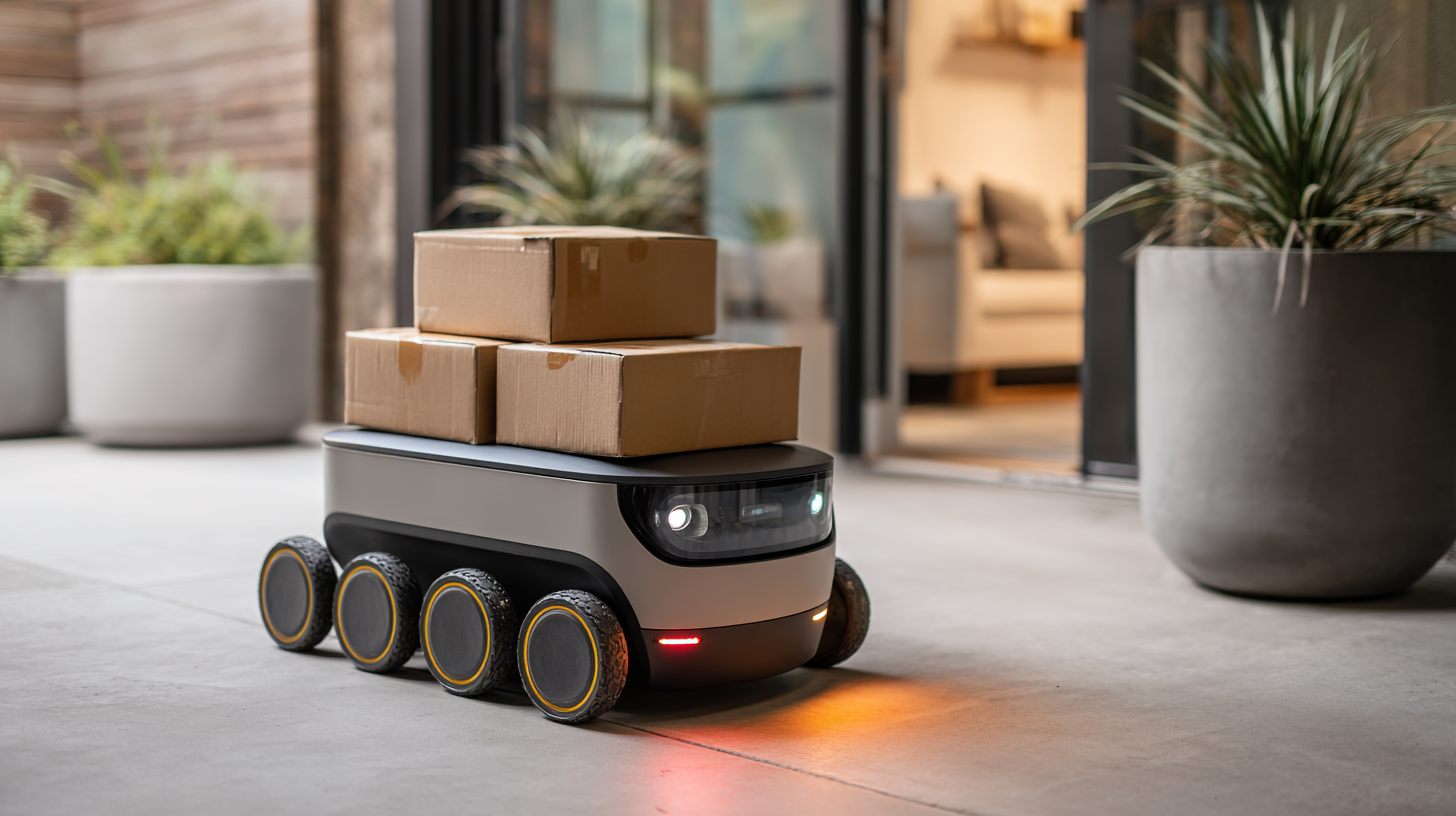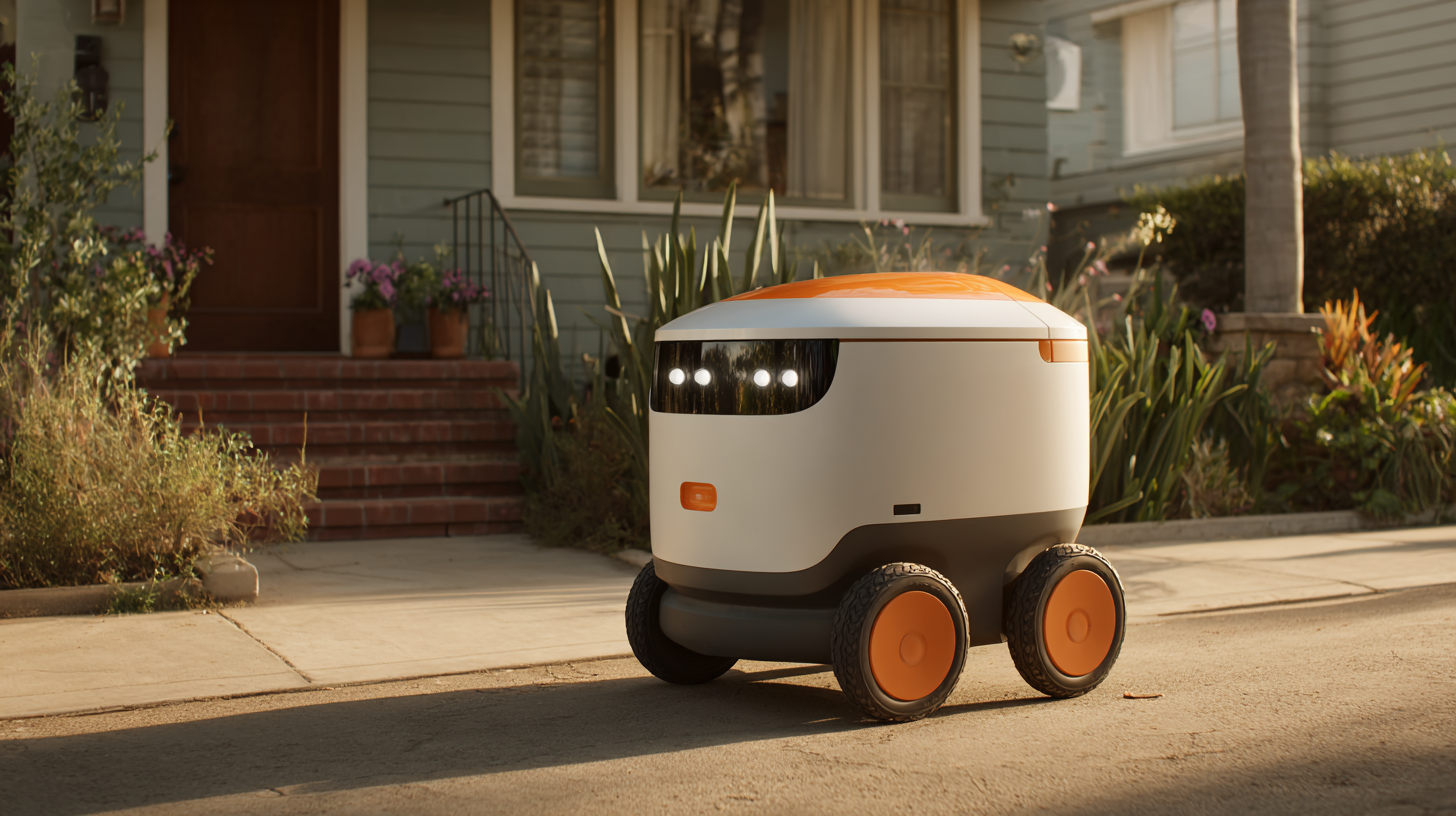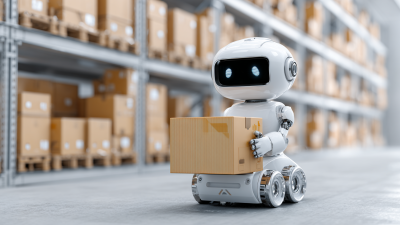

14, Raghava Enclave, Transport Road, Secunderabad, Hyderabad (500009)
©2024 All Rights Reserved by excitechrobot.com
In an era where convenience and efficiency define our daily routines, "Autonomous Robot Delivery" emerges as a transformative force in the shopping landscape. As technology continues to evolve, the integration of autonomous robots into our delivery systems is not only changing how we receive products but also redefining our expectations of speed and service. This innovative shift promises to streamline the shopping experience, enabling consumers to enjoy a seamless, contactless transaction from the comfort of their homes.

With robots capable of navigating urban environments, delivering essentials, and responding to consumer demands in real-time, the future of retail is set to be reimagined. This article delves into the implications of autonomous robot delivery on our lifestyles, exploring its benefits, potential challenges, and untapped possibilities that lie ahead in this exciting new chapter of shopping.
The retail sector is undergoing a significant transformation with the rise of autonomous robots, which are increasingly becoming integral to the shopping experience. These robots are designed to streamline logistics and enhance customer interactions. From automated inventory management to delivering purchases directly to consumers' doorsteps, their deployment marks a pivotal shift from traditional retail practices. Retailers are investing in robotics technology not only to reduce operational costs but also to meet the growing demand for rapid delivery and convenience.
Moreover, autonomous robots are enhancing the in-store experience for customers. They can assist shoppers by guiding them to products, offering recommendations, and providing real-time inventory updates. This personalized assistance not only improves customer satisfaction but also allows human employees to focus on more complex tasks. As these robots become more sophisticated and widely adopted, they are expected to revolutionize the retail landscape, making shopping more efficient and enjoyable while catering to the evolving preferences of consumers.
The rise of autonomous robot delivery is transforming the consumer experience in unprecedented ways. As these robots navigate city streets and neighborhoods, they offer a new level of convenience that aligns perfectly with today's fast-paced lifestyle. Shoppers can now enjoy the ease of placing an order from the comfort of their homes, knowing that their purchases will arrive at their doorstep within minutes, unhindered by traditional delivery delays or logistical challenges. This automation not only enhances satisfaction but also incentivizes more frequent purchases, thereby reshaping retail dynamics.
Moreover, the integration of delivery automation minimizes human error and optimizes efficiency. With advanced technologies such as artificial intelligence, robots can analyze traffic patterns and adapt their routes in real-time, ensuring prompt and reliable service. This level of precision reduces operational costs and allows retailers to allocate resources more effectively. As customers witness the seamless and efficient delivery experience, their trust in automated services grows, paving the way for a broader acceptance of technology in everyday shopping. The future of retail lies in these innovations, enriching consumer interactions and fostering a new era where convenience and automation reign supreme.

The implementation of autonomous robot delivery systems presents a myriad of challenges that need to be addressed to ensure their success in reshaping our shopping experience. One significant obstacle is the regulatory landscape, where many regions lack concrete guidelines for robotic operations in public spaces. To navigate this, collaboration with local governments and stakeholders is crucial. Establishing clear regulations will not only facilitate smoother operations but also enhance public acceptance of these technologies.

Another challenge lies in the technological reliability and safety of the robots themselves. Issues such as navigation in complex urban environments, interaction with pedestrians, and overcoming unforeseen obstacles can hinder efficiency. To tackle this, developers are increasingly focusing on advanced machine learning algorithms and sensor technologies that enable real-time decision-making. Additionally, robust safety protocols must be instituted to address potential accidents or malfunctions, ensuring that both users and the general public remain secure during delivery processes. By confronting these challenges head-on, the potential of autonomous robot delivery systems can be fully realized.
The rise of autonomous robot delivery systems is transforming urban logistics, presenting both opportunities and challenges in managing urban traffic. According to a recent report by the International Transport Forum, the integration of autonomous delivery robots could lead to a 30% reduction in urban delivery costs by 2025. These robots, often operating in dedicated lanes, are designed to optimize delivery routes, minimizing their travel time and reducing congestion on city streets.
Moreover, the impact on traffic dynamics is significant. A study by the McKinsey Global Institute indicates that by 2030, autonomous delivery systems could account for up to 20% of logistics activity in densely populated urban areas. This shift could alleviate some of the traffic burdens caused by traditional delivery vehicles, which often contribute to rush hour congestion. As cities embrace these innovative solutions, it’s imperative for urban planners to adapt infrastructure and traffic management systems to support the coexistence of autonomous robots and conventional traffic, ensuring a smoother flow for all.
| Aspect | Statistic | Impact |
|---|---|---|
| Delivery Time Reduction | 30% faster | Improves customer satisfaction and repeat purchases |
| Traffic Congestion Mitigation | 15% decrease | Leads to smoother urban mobility |
| Cost of Delivery | 20% lower | Makes e-commerce more accessible |
| Environmental Impact | 25% reduction in emissions | Contributes to sustainability goals |
| User Adoption Rate | 68% of consumers | Indicates growing trust in technology |
The advent of artificial intelligence (AI) is reshaping the landscape of shopping and delivery services in unprecedented ways. As consumers increasingly expect convenience and efficiency, AI-driven technologies are stepping up to meet these demands. From personalized shopping experiences powered by machine learning algorithms to smart inventory management systems that optimize stock levels, AI is enhancing both the consumer journey and backend operations. Retailers are leveraging AI to analyze consumer behavior, predict trends, and curate tailored offers, leading to a more engaging shopping experience.
Moreover, the integration of autonomous delivery robots is transforming the logistics sector. These robots navigate urban environments, delivering products directly to customers' doorsteps, thus eliminating traditional delivery delays. With features such as real-time tracking and route optimization, AI enables these robots to function seamlessly in busy settings. As this technology continues to develop, it promises to reduce costs and carbon footprints while increasing the speed and reliability of delivery services. The future of shopping is not only about the products we buy but also how those products reach us, highlighting a revolutionary shift in retail and logistics facilitated by AI.






